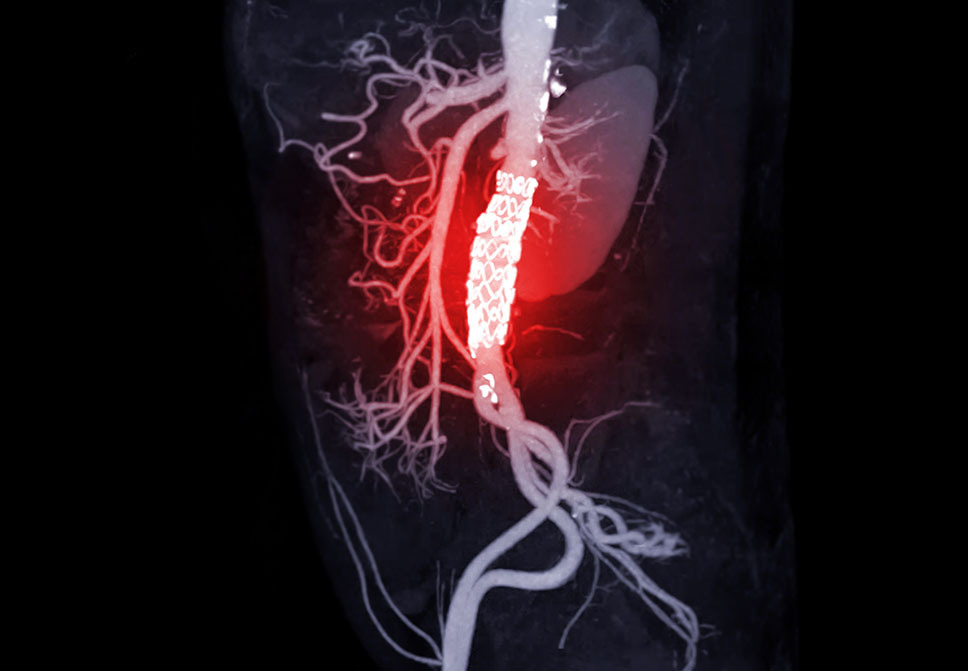
HOSPITAL REPORT
The premier resource for hospital professionals from Relias Media, the trusted source for healthcare information and continuing education.
Performance Measure Takes Aim at Missed Diagnoses for Ruptured Abdominal Aortic Aneurysms
November 4th, 2024

By Dorothy Brooks
When a patient presents to the emergency department (ED) with a ruptured abdominal aortic aneurysm (rAAA), survival depends on the provider making a rapid diagnosis so that surgical intervention can be employed as quickly as possible. However, research data suggest the diagnosis is missed anywhere from 16% to 62% of the time.1
It’s an issue that has attracted the attention of the American College of Emergency Physicians (ACEP). “Our initial literature review showed that while this is a very rare disorder, it requires a rapid diagnosis and treatment. As most cases [of rAAA] present to the ED, the need to diagnose this falls largely onto the physician,” explains Sandra M. Schneider, MD, FACEP, senior vice president for clinical affairs at ACEP and an adjunct professor of emergency medicine at the University of Pittsburgh.
Schneider adds that not only does the literature suggest that rAAA is missed in the ED, but data also show that many patients are not screened appropriately for an abdominal aortic aneurysm (AAA) during their outpatient primary care. “Of those not screened, most are from minority groups or lower socioeconomic groups — the very groups that disproportionately present to the ED for care,” she says.
“After our initial literature review, we used ACEP’s Emergency Medicine Data Institute to provide us with data on the use of imaging in older patients with acute abdominal pain,” she says. “The data showed that a significant number of older adults do not have imaging done when they present for abdominal pain to the ED.”
To push for improvement in the care of patients with rAAA, ACEP obtained grant funds from the Gordon and Betty Moore Foundation to create a quality measure aimed at elevating the diagnostic accuracy of rAAA. That measure has been approved by the Center for Medicare and Medicaid Services (CMS) and is available as part of the Merit-Based Incentive Payment System (MIPS).
Meet the Requirements
To meet the requirements of the measure, all patients aged 55 years and older who present to the ED with new, acute abdominal or back pain and hypotension — or systolic blood pressure reading < 90 mmHg — must have an ultrasound or a computed tomography (CT) scan performed during the ED encounter. Some exceptions to the measure include:
- Patients aged 55 to 65 years who have been screened previously for an AAA or have had a CT or ultrasound exam of the abdomen within the past five years;
- Patients older than 65 who are found to have a normal sized aorta;
- Patients who refuse a CT or ultrasound exam;
- Patients who die or are immediately transferred to the operating room.
Schneider explains that most emergency physicians have become skilled in the use of ultrasound, as it is a core competency. However, she stresses that it is important to continually refresh skills in this area, and one way to do this is by using the ACEP’s review guide for ultrasound, SONOGUIDE (https://www.acep.org/sonoguide).
Make It Routine
“Perhaps the easiest way to care for older patients with acute abdominal pain is simply to get into the habit of scanning the abdomen while performing the initial physical examination in such patients,” she says. “It is important to note that the ultrasound findings in rAAA are not as obvious as AAA. Therefore, it is wise to get a follow-up CT scan in any patient where the symptoms are suggestive [of rAAA] or where the ultrasound is not completely normal but not diagnostic of rAAA.”
Schneider acknowledges there are probably still some EDs that struggle to obtain access to bedside ultrasound, but she is hopeful that the new measure can be used to reinforce the case with hospital administration and others that bedside ultrasound is an essential part of emergency medicine practice.
Further, the effects of crowding and rising volumes can present barriers as well. “Boarding makes everything in the ED more difficult. That is why ACEP is working so hard at a national level on the issue,” says Schneider, but she adds that such factors should not interfere with meeting the requirements of the new measure. “If the ultrasound machine is available in the ED, then the addition of an aortic scan should only add a few minutes to the ED encounter. In the few EDs where there is no access to bedside ultrasound, this will potentially prolong the visit for some patients, but again, this is evidence of the need for bedside ultrasound,” she says.
The new measure is just one of many MIPS measures that ACEP and other organizations have worked to create, shares Schneider. “Emergency physicians can select from all of these for the best ones they should report,” she says. “That selection can be based on those measures where they will do well, or more importantly, [they can select] measures that will improve patient outcomes.”
Reference
- Metcalfe D, Sugand K, Thrumurthy SG, et al. Diagnosis of ruptured abdominal aortic aneurysm: A multicentre cohort study. Eur J Emerg Med 2016;23:386-90.
